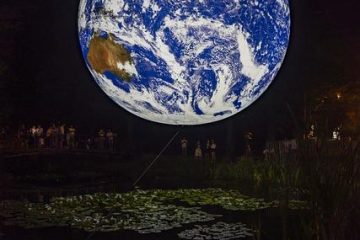In a world filled with mysteries and wonders, the Gaia Hypothesis stands as a captivating theory that beckons us to peek behind the curtain of our planet’s intricate web of life. Imagine Earth not merely as a static rock adrift in the vast cosmic sea, but as a living, breathing organism in its own right. Join us on a journey to unravel the essence of the Gaia Hypothesis simplified, where the threads of science and speculation intertwine to paint a portrait of our planet as a harmonious entity pulsating with interconnected life forms. Let’s delve into this captivating concept that may forever change the way we view our home in the cosmos.
Table of Contents
- Understanding the Gaia Hypothesis: A Simplified Overview
- The Interconnectedness of Life on Earth
- Applying Gaia Hypothesis Principles to Environmental Conservation
- Embracing Sustainability: Practical Steps Inspired by Gaia Hypothesis
- Q&A
- Key Takeaways
Understanding the Gaia Hypothesis: A Simplified Overview
The Gaia Hypothesis proposes that the Earth functions as a self-regulating system, maintaining conditions suitable for life to thrive. In essence, it views our planet as a single organism where all living and non-living components interact to create a balanced environment. This concept challenges the traditional view of Earth as a passive backdrop to life and suggests a dynamic and interconnected world.
One fascinating aspect of the Gaia Hypothesis is the idea that Earth acts like a living being, with various systems working together to create stability. For instance, the interaction between the atmosphere, oceans, and land forms a complex network that regulates temperature, chemistry, and other crucial factors for life. By understanding this interconnectedness, we gain a deeper appreciation for the intricate web of relationships that sustain life on our remarkable planet.
The Interconnectedness of Life on Earth
Embark on a journey through the intricate web of life that encompasses our planet. From the mightiest rainforest trees to the tiniest soil microbes, every organism plays a crucial role in the grand symphony of nature. The Gaia hypothesis proposes that Earth is a self-regulating system where living organisms and their environment coexist in a delicate balance, forming a unified entity.
<p>Imagine the lush forests, teeming oceans, and vast deserts as interconnected pieces of a puzzle, each piece essential for the whole picture to thrive. **Forests** absorb carbon dioxide, **oceans** regulate temperature, **deserts** shape weather patterns – together, they create a harmonious ecosystem where life flourishes. This interdependence highlights the profound connection between all living beings, emphasizing the need for harmony and sustainability in our interactions with the natural world.</p>
Applying Gaia Hypothesis Principles to Environmental Conservation
Imagine a world where nature is not just a collection of organisms, but a living, breathing superorganism in itself. This is the core concept of the Gaia Hypothesis, which proposes that Earth functions as a self-regulating system, much like a living organism. By understanding and applying the principles of this hypothesis to environmental conservation efforts, we can potentially unlock innovative and sustainable solutions for protecting our planet.
<p>One key principle of the Gaia Hypothesis is the interconnectedness of all living and non-living components of the Earth. **This interdependence emphasizes the need for holistic approaches to conservation**, considering the intricate relationships between ecosystems, species, and natural processes. By recognizing the Earth as a unified and self-regulating entity, we can develop conservation strategies that work with nature rather than against it, fostering harmony and balance in our environmental efforts.</p>
Embracing Sustainability: Practical Steps Inspired by Gaia Hypothesis
In today’s era, the concept of Gaia hypothesis presents a profound perspective on interconnectedness and sustainability. By delving into the essence of this hypothesis, individuals can unlock practical steps to align their actions with the harmony of the Earth itself.
Creating Sustainable Habits: Embracing the Gaia hypothesis can inspire us to adopt sustainable habits in our daily lives. Simple actions like reducing plastic usage, composting organic waste, and supporting local eco-friendly businesses contribute significantly to the well-being of our planet.
Nurturing Ecosystem Harmony: Another key aspect influenced by the Gaia hypothesis is the idea of nurturing ecosystem harmony. By planting native species, conserving water resources, and promoting biodiversity, we actively participate in fostering a balanced and resilient environment for all living beings.
| Simple Action | Impact |
|---|---|
| Reducing plastic usage | Less plastic waste in landfills and oceans |
| Composting organic waste | Nutrient-rich soil for plants |
| Supporting local eco-friendly businesses | Encouraging sustainable practices in the community |
Q&A
Q: What is the Gaia Hypothesis in simple terms?
A: The Gaia Hypothesis suggests that the Earth functions as a self-regulating system, similar to a living organism, where the planet and its inhabitants collectively maintain conditions suitable for life.
Q: Who proposed the Gaia Hypothesis?
A: The Gaia Hypothesis was proposed by scientist James Lovelock in the 1970s, along with microbiologist Lynn Margulis, suggesting that Earth operates as a single, self-regulating system.
Q: How does the Gaia Hypothesis relate to environmental science?
A: The Gaia Hypothesis has significant implications for environmental science as it emphasizes the interconnectedness of all living organisms with their environment, highlighting the importance of maintaining ecological balance for the planet’s overall well-being.
Q: Is the Gaia Hypothesis widely accepted in the scientific community?
A: While the Gaia Hypothesis has sparked debate among scientists, it has influenced ecological thinking and led to further research on the intricate relationships between the Earth, its biosphere, and the impact of human activities on the environment.
Q: What are some practical applications of the Gaia Hypothesis in modern environmental practices?
A: The principles of the Gaia Hypothesis have inspired initiatives promoting sustainable development, conservation efforts, and the recognition of the Earth as a complex, interconnected system that requires collective stewardship for long-term environmental health.
Key Takeaways
As we wrap up our journey through the simplified version of the Gaia hypothesis, we hope this article has shed light on the interconnectedness of our planet and the delicate balance that sustains life. By exploring this fascinating concept, we gain a deeper appreciation for the intricate web of relationships that exist in our ecosystem. Remember, we are not just inhabitants of Earth but integral parts of a larger, living system. Let’s continue to treasure and protect our planet, for it is our shared home and the foundation of all life as we know it. Thank you for joining us on this enlightening exploration of the Gaia hypothesis.



0 Comments